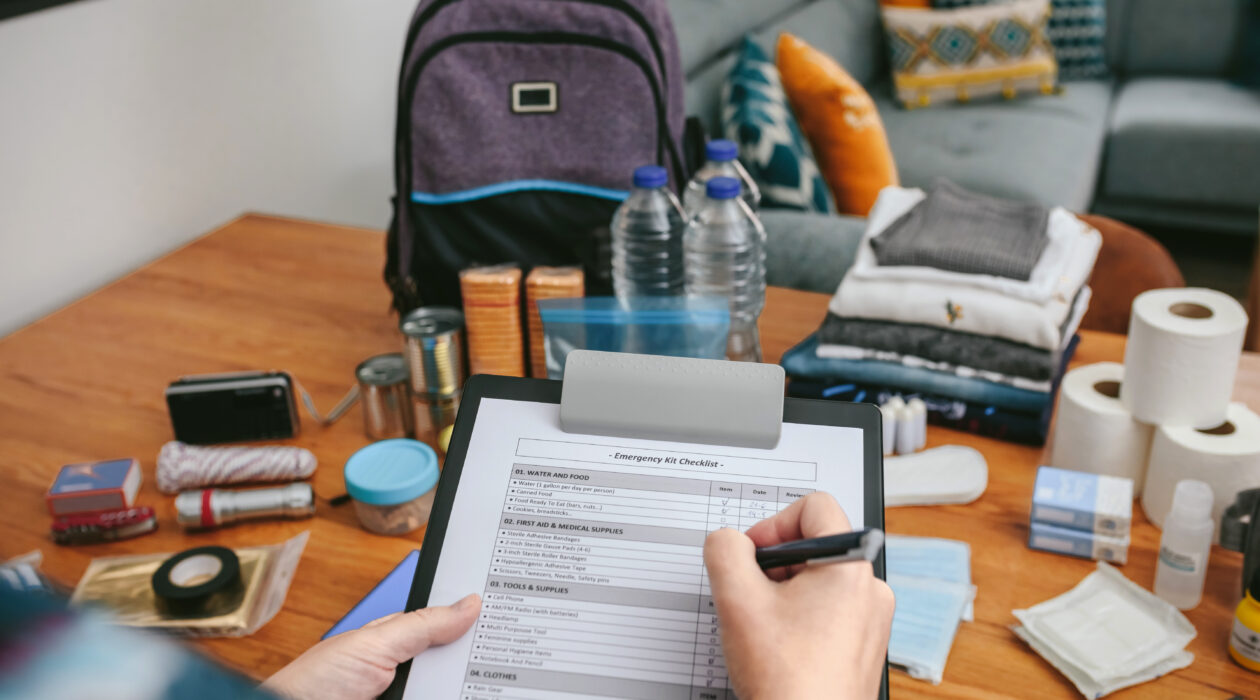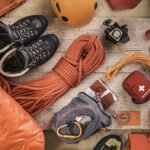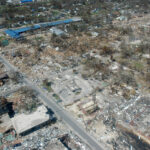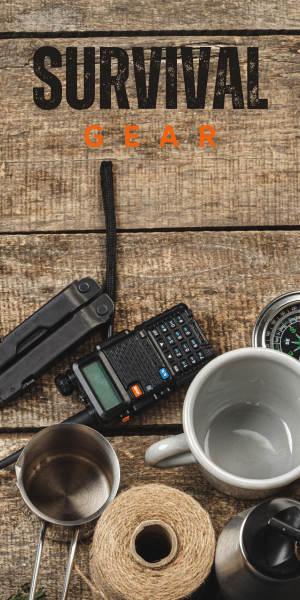Urban survival gear presents unique challenges distinct from rural or wilderness survival. The dense population, concrete landscapes, and availability of resources in a city require a specialized approach to preparation and gear selection
Essentials for Your Urban Survival Gear
1-Tactical Flashlight for Urban Survival
Essential during power outages, a high-quality tactical flashlight can also serve as a defensive tool. It should be an easily accessible part of your kit.
- Brightness and Beam Distance: Choose a flashlight with adjustable brightness settings. High lumens are crucial for disorienting potential threats and illuminating long distances. However, a dimmer mode is also valuable for conserving battery life during prolonged use.
- Durability: Your flashlight should be rugged and durable. Look for options with a solid, water-resistant build, capable of withstanding rough handling and adverse weather conditions.
- Battery Life: Consider flashlights with extended battery life or those that use commonly available battery types. Rechargeable batteries with a USB charging option can be beneficial in urban settings where power sources are more accessible.
- Size and Portability: A compact design is essential for easy carrying without drawing attention. A flashlight that can be comfortably carried in a pocket or attached to a belt ensures it is readily accessible in emergencies.
- Additional Features: Features like a strobe mode can be useful for self-defense, while an SOS signal mode can be critical in emergency situations. Some advanced models also come with built-in power banks to charge other devices.
- Brand and Reviews: Opt for reputable brands known for quality and reliability. Reading reviews and testimonials from other users can provide valuable insights into a flashlight’s real-world performance.
2- Essential Components of a First-Aid Kit for Urban Survival
A well-equipped first-aid kit is a cornerstone of any urban survival gear. Alongside the basics like antiseptic spray, band-aids, tape, and gauze strips, consider including the following items:
- Sterile Gloves: Protects against infection during wound treatment.
- Tweezers and Scissors: Useful for removing debris from wounds and cutting dressings to size.
- Thermal Blanket: Essential for maintaining body temperature in shock situations.
- Pain Relievers: Such as ibuprofen or acetaminophen, to manage pain and reduce fever.
- Antihistamines: For allergic reactions.
- Saline Solution: For cleaning wounds or flushing out eyes.
- Adhesive and Non-Adhesive Bandages: In various sizes for different types of wounds.
- Wound Closure Strips: As a temporary solution for closing minor cuts.
- Burn Gel and Dressings: For immediate treatment of burns.
- CPR Mask: In case you need to perform CPR.
- Instruction Booklet: Provides guidance on handling common injuries.
Having a first-aid kit in key locations like your home, workplace, and vehicle ensures you’re always prepared to handle medical emergencies effectively. Remember to regularly check and replenish your kit to keep it up to date.
3- Bottled Water and Filtration for Urban Survival.
Hydration is a critical element of survival, particularly in urban environments where access to clean water may be compromised during emergencies.
- Portable Water Bottles: Choose durable, leak-proof bottles. Stainless steel or BPA-free plastic are good options. Having multiple smaller bottles can be more practical than a single large one for ease of transport.
- Water Filtration Systems: Portable water filters or purification tablets are essential. Consider filters that can remove bacteria, protozoa, and other contaminants. Straw filters or pump filters are convenient for on-the-go use.
- Boiling Water: In absence of filtration tools, know the basics of boiling water to kill pathogens. A portable gas stove can be a valuable addition to your kit for this purpose.
- Storage and Conservation: Learn how to store water safely and techniques to conserve water, like avoiding unnecessary exertion to reduce sweating.
- Identifying Water Sources: Familiarize yourself with potential urban water sources such as public fountains, restrooms, or natural bodies of water in parks. In emergencies, knowing these can be lifesaving.
Having a plan for both carrying and procuring clean water is essential for urban survival. Regularly check and replace stored water to ensure its safety and freshness.
4- Food for Survival in Urban Environments
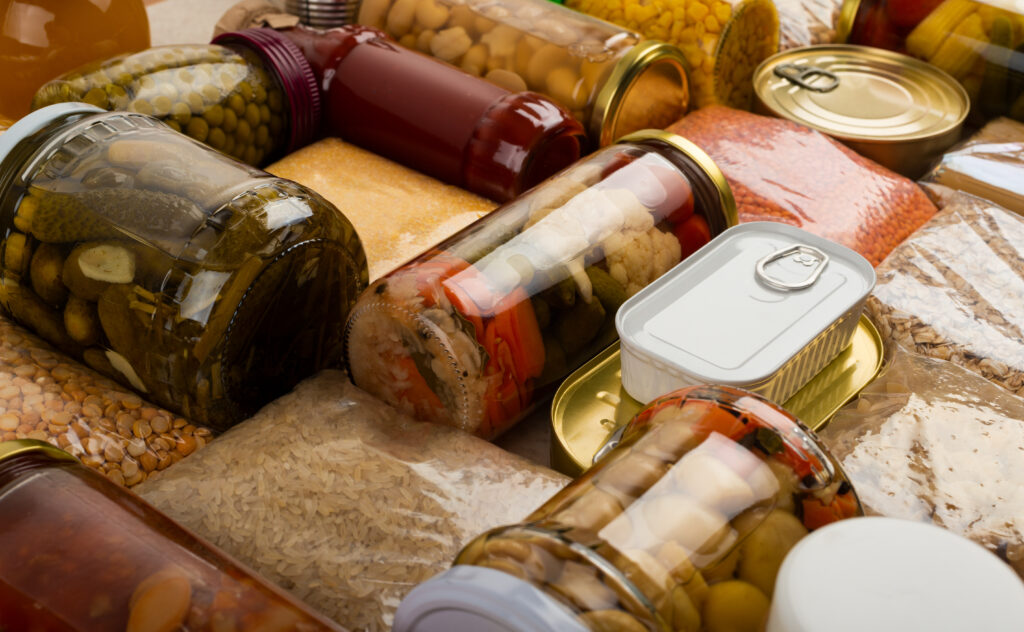
When assembling your urban survival kit, selecting the right food is crucial. Here are key points to consider:
- Non-Perishable Items: Focus on foods that have a long shelf life and do not require refrigeration. Examples include canned goods, granola bars, nuts, and dried fruits.
- Freeze-Dried and Dehydrated Foods: These are lightweight, take up minimal space, and can be rehydrated with water. They offer a good balance of nutrients and energy.
- Vacuum-Sealed Meals: These meals are compact, easy to carry, and can be stored for long periods. They often just require hot water to prepare.
- Energy-Dense Foods: Look for foods high in calories and nutrients to sustain energy levels. Items like peanut butter, trail mix, and energy bars are excellent choices.
- Meal Kits: Pre-packaged survival food kits are a convenient option. They usually contain a variety of meals and can be a time-saver.
- Cooking Options: Consider including a small portable stove and fuel in your kit, especially if your chosen foods require heating.
- Utensils: Include basic utensils like a spoon or a multi-tool with a can opener.
- Special Dietary Needs: If you have dietary restrictions or allergies, ensure your survival food aligns with these needs.
- Water for Preparation: Remember that some freeze-dried or dehydrated foods need water for preparation, so plan your water storage accordingly.
- Regular Rotation: Periodically rotate your food supply to ensure it remains fresh and usable.
By focusing on these aspects, you can ensure your urban survival kit is well-equipped with nutritious, long-lasting, and easy-to-prepare food options.
5- The Importance of an Emergency Radio in Urban Survival Gear
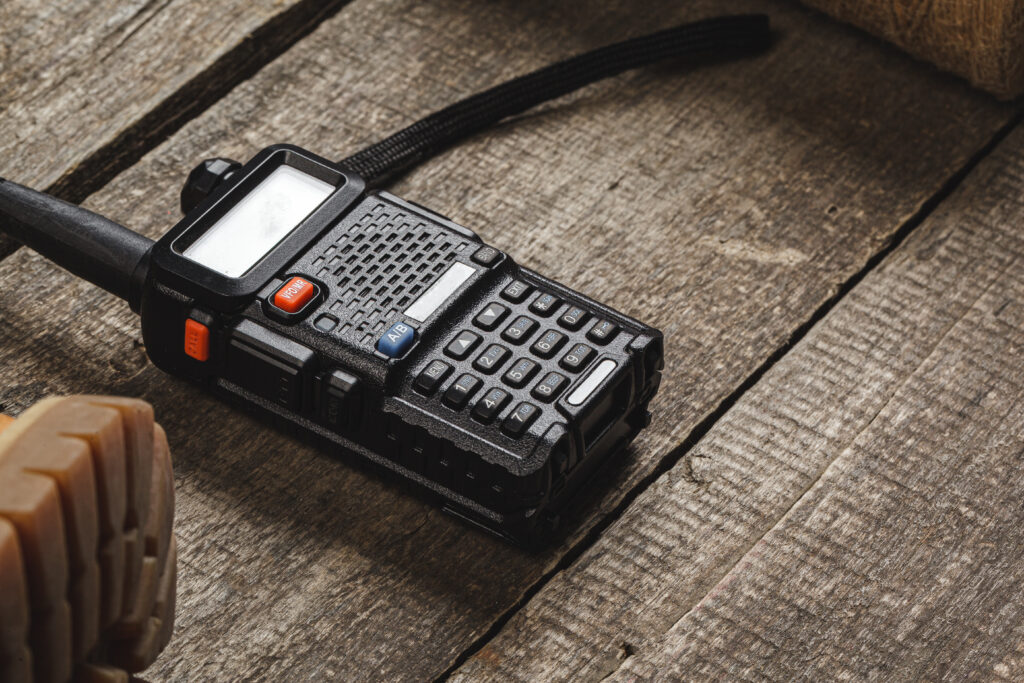
An emergency radio is an indispensable tool in urban survival situations for several reasons:
- Information Access: Provides real-time updates on weather forecasts, emergency alerts, and news. During crises, staying informed is crucial for making safe decisions.
- Solar-Powered Options: Radios with solar charging capabilities ensure functionality even when batteries or electricity are not available. Many models also include hand-crank charging for additional power options.
- Battery Life and Durability: Look for models with long battery life and sturdy construction. Being able to rely on your radio in various conditions is essential.
- Connectivity: In scenarios where cell phone networks are overloaded or down, a radio keeps you connected to important updates and instructions from local authorities.
- Multipurpose Models: Some emergency radios come with additional features like a built-in flashlight, USB charging ports for small devices, and even SOS alarm signals.
- Portability: A compact, lightweight design is crucial for ease of carrying and storage in your survival kit.
- Frequency Range: Ensure the radio covers AM/FM bands, and if possible, NOAA weather channels for more detailed and location-specific information.
Incorporating a durable, multi-functional emergency radio in your urban survival kit is a proactive step in ensuring you stay informed and prepared in the event of an emergency.
Adapting to the Urban Environment
In urban settings, the way you carry and conceal your survival gear matters. To avoid attracting unwanted attention, especially in disaster aftermaths, select gear that blends in and doesn’t highlight you as a well-equipped individual, which could make you a target.
In the End :
Creating an urban survival kit requires careful consideration of the unique challenges posed by city environments. By focusing on essential items like tactical flashlights, first-aid kits, water, food, and an emergency radio, you can better prepare to navigate and survive urban disasters. Remember, the key is to stay low-profile and well-prepared.

